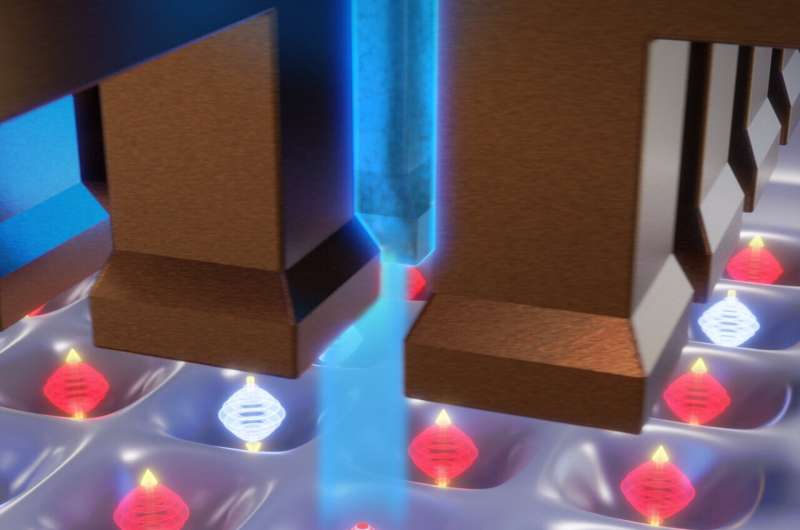January 26, 2023 feature
This article has been reviewed according to Science X's editorial process and policies. Editors have highlighted the following attributes while ensuring the content's credibility:
fact-checked
peer-reviewed publication
trusted source
proofread
Study achieves the coherent manipulation of electron spins in silicon

In recent years, many physicists and computer scientists have been working on the development of quantum computing technologies. These technologies are based on qubits, the basic units of quantum information.
In contrast with classical bits, which have a value of 0 or 1, qubits can exist in superposition states, so they can have a value of 0 and 1 simultaneously. Qubits can be made of different physical systems, including electrons, nuclear spins (i.e., the spin state of a nucleus), photons, and superconducting circuits.
Electron spins confined in silicon quantum dots (i.e., tiny silicon-based structures) have shown particular promise as qubits, particularly due to their long coherence times, high gate fidelities and compatibility with existing semiconductor manufacturing methods. Coherently controlling multiple electron spin states, however, can be challenging.
Researchers at University of Rochester have recently introduced a new strategy to coherently manipulate either single or multiple electron spins in silicon quantum dots. This method, introduced in a paper published in Nature Physics, could open new possibilities for the development of reliable and highly performing quantum computers.
"As with many experiments in science, we were initially investigating an unrelated topic, when we started noticing all sorts of coherent oscillations popping up in our data." John Nichol, one of the researchers who carried out the study, told Phys.org. "It took us a little while to come up with the theoretical explanation, but once we did, everything fell into place. Spin-valley coupling has been explored before many times, but never to directly mediate coherent transitions between different spin states."
The strategy for controlling electron spins in silicon proposed by Nichol and his colleagues takes advantage of spin-valley coupling, the interaction between an electron's spin and valley states. Electrons in silicon quantum dots have both spin and valley quantum numbers. Their spin state can be "up" or "down," while their valley state can be + or −.
"At a certain magnetic field, the energy of the up,+ state, for example, can be almost equal in energy to the down,- state," Nichol explained. "Because the energy difference between the + and − states depends on electric fields, we can use a voltage pulse to then bring up,+ exactly into resonance with down,−. When this happens, an electron initially prepared in an up,+ state will coherently oscillate to down,−, and back and forth. These are spin-valley oscillations."
So far, the standard method to manipulate electron spins in silicon quantum dots entailed the use of time-varying magnetic fields. Nichol and his colleagues showed that their strategy enables the coherent manipulation of electron spins without the need to use oscillating electromagnetic fields.
"Oscillating magnetic fields can be especially difficult to generate at cryogenic temperatures, and spin-valley coupling eliminates this need," Nichol said. "Another achievement is that the valley degree of freedom in silicon has often been regarded as a 'bug' rather than a feature of silicon qubits, but our work shows that it can be a very useful feature."
The recent work by this team of researchers highlights the promise of utilizing spin-valley coupling to achieve the coherent control of qubits based on electron spins confined in silicon quantum dots. In their next papers, they hope to gain a better understanding of what characteristics of the growth, fabrication, and tuning of quantum dots can impact spin-valley coupling, as this could further inform the fabrication of electron-based quantum computing technologies.
"We would also like to explore how one could implement multi-qubit gates in this framework," Nichol added. "One challenge is that the magnetic field needs to be tuned separately for each qubit, and we are looking into realistic ways to implement this."
More information: Xinxin Cai et al, Coherent spin–valley oscillations in silicon, Nature Physics (2023). DOI: 10.1038/s41567-022-01870-y
Journal information: Nature Physics
© 2023 Science X Network


















